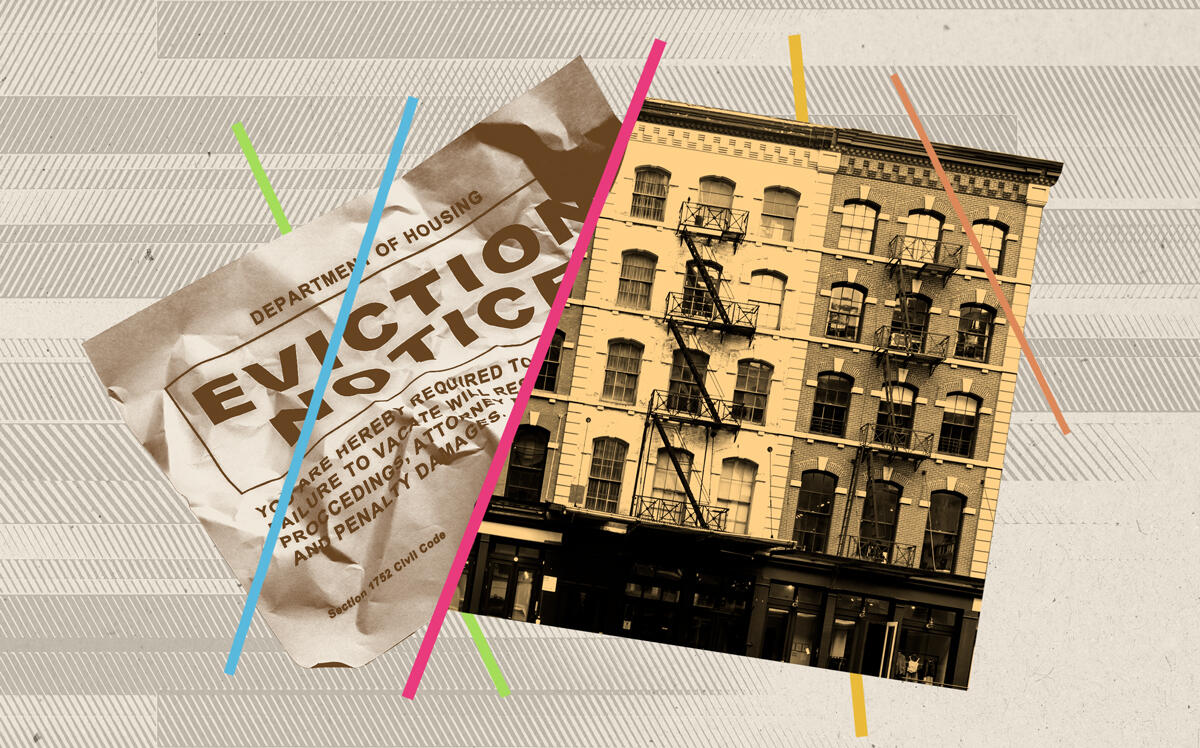 Multi-family flipper to pay $2.75M to settle unlawful evictions suit
Multi-family flipper to pay $2.75M to settle unlawful evictions suit
Trending
Multifamily flips spur more evictions: report
Landlords who buy low, sell high oust tenants more than non-speculative owners

One thing leads to another, as The Fixx sang in their 1982 classic.
In the case of rising multifamily property values in New York City, it will lead to more evictions, a new report predicts.
Here’s the logic.
Strong demand for city living is leading to rising rents, which in turn increases valuations of apartment buildings and attracts buyers looking for a quick profit.
Such speculative investments tend to be accompanied by more evictions, according to a report released this week.
Communities of color, which already face higher rates of eviction, are more likely to bear the brunt of that potential displacement, the authors write.
“The re-charging market combined with the end of the eviction moratorium represents a real risk to tenants,” said David Greenberg, vice president of research and evaluation for the Local Initiatives Support Corporation, a Manhattan-based nonprofit that co-authored the report.
“Because properties that appreciated steeply also evicted more frequently, there’s real reason to be concerned about the effects on tenants of the relatively hot multifamily market,” he added.
Tentative property tax assessments showed the market value of New York City rental buildings jumped 11.7 percent from last year. And those values still have room to run: They are still 7.7 percent shy of pre-pandemic levels.
Read more
 Multi-family flipper to pay $2.75M to settle unlawful evictions suit
Multi-family flipper to pay $2.75M to settle unlawful evictions suit
 California bill would triple taxes on house flippers
California bill would triple taxes on house flippers
The report, also authored by nonprofit University Neighborhood Housing Program and the New School, finds that in rental buildings flipped for a large profit or refinanced for a much larger loan, tenants were 1.5 times as likely to face eviction than in properties that had not experienced such a “speculative event.”
To identify buildings that may have been subject to speculation, the authors looked at trades of multifamily buildings with five or more units between 2003 and 2020, then cut that data down to the top quarter of most profitable sales. That portion of buildings saw at least a 30 percent annual increase.
They then analyzed buildings where debt rose by at least 50 percent annually in the same period. Landlords of appreciating buildings can refinance as often as every few years and use the proceeds to bankroll new investments.
Owners might use that cash for building improvements, the report notes. However, a separate analysis suggests they are not: Buildings with speculative debt had about 50 percent more housing violations than those without.
The report lists Ved Parkash, an owner who made the public advocate’s worst landlord list in 2015, as an example. Parkash bought 835 Walton Avenue in the Bronx for $3.2 million in 2004 and took out a $2.4 million mortgage. He refinanced for $3.4 million in 2008, for $3.2 million in 2012 and for $6.3 million in 2015. On a whole, Parkash’s portfolio had six times more housing violations than the city average, the report found.
A spokesperson for Parkash Management contested that the owner’s portfolio contained about 7.5 violations per unit, as described in the report.
“[The report] failed to say that the number of building violations is substantially less than when the buildings were purchased,” the spokesperson said. “Many of the violations were cured but not removed from the record.”
To link speculative investment to evictions, the authors examined properties with the highest sale price appreciation or debt increases between 2014 and 2016. Properties with a speculative event had nearly twice as many evictions per unit between 2017 and 2019 as those without one.
Evictions are more frequent in communities of color, impoverished neighborhoods and areas where rent has risen, so the authors ran the numbers controlling for those factors and found that properties subject to speculation still had 150 percent more evictions.
“There is a straightforward economic logic to this finding — owners hoping to realize greater value on their properties, or who are feeling the pressure of increased debt, are more likely to initiate eviction proceedings,” the authors write.
In market-rate buildings, owners may raise the rent on tenants, then file for an eviction when the renters don’t pay. Once the tenant is out, the owner can get a higher rent from a new tenant. Owners who favor refinancing may use the cash from them to buy more buildings and replicate the scheme.
The report adds that because those types of purchase and refinancing plans were more frequent in Black and Latino neighborhoods, those populations are more likely to be subject to displacement from speculative owners.
To counteract that, the report proposes policy changes including good cause eviction, which would give tenants more protection from displacement.
Advocates for the legislation argue that it would reduce transience and benefit families. Opponents say it would produce permanent tenancies and discourage investment in buildings.
The authors also recommend funding programs that allow tenants and community organizations to purchase buildings and better city enforcement of housing maintenance. Harsher penalties for violations could disincentivize owners from forgoing repairs.
Finally, the report suggests regulations that would compel owners to direct refinancing proceeds toward improvements and hold lenders accountable.
This article has been updated with comments from Parkash Management.




